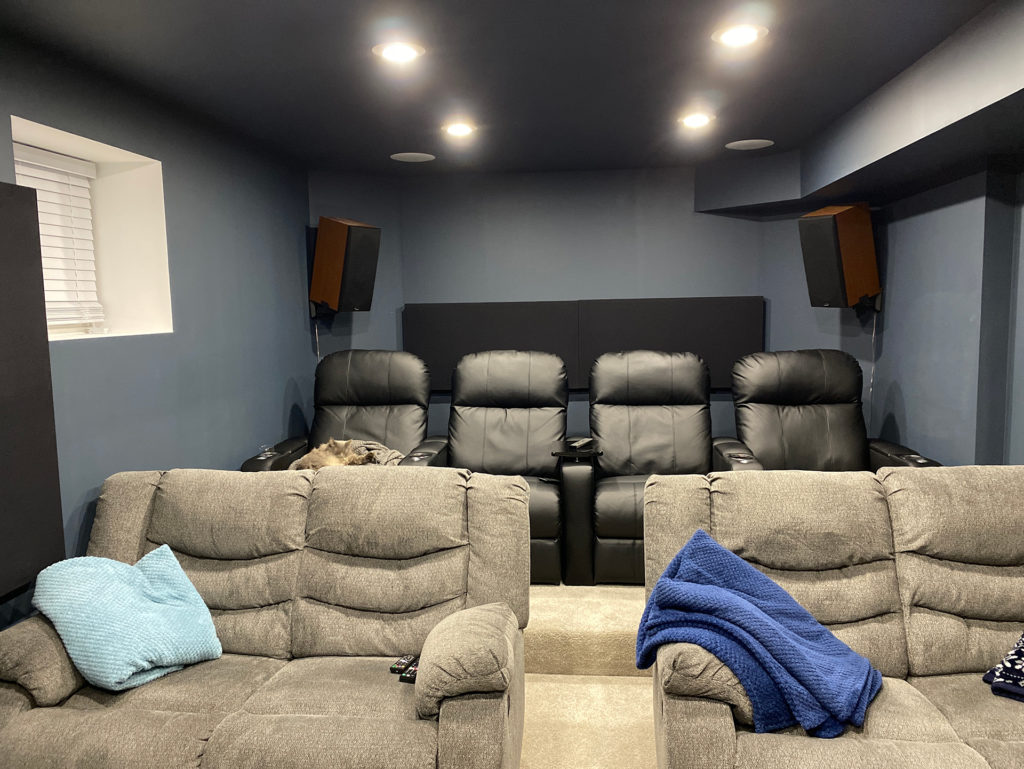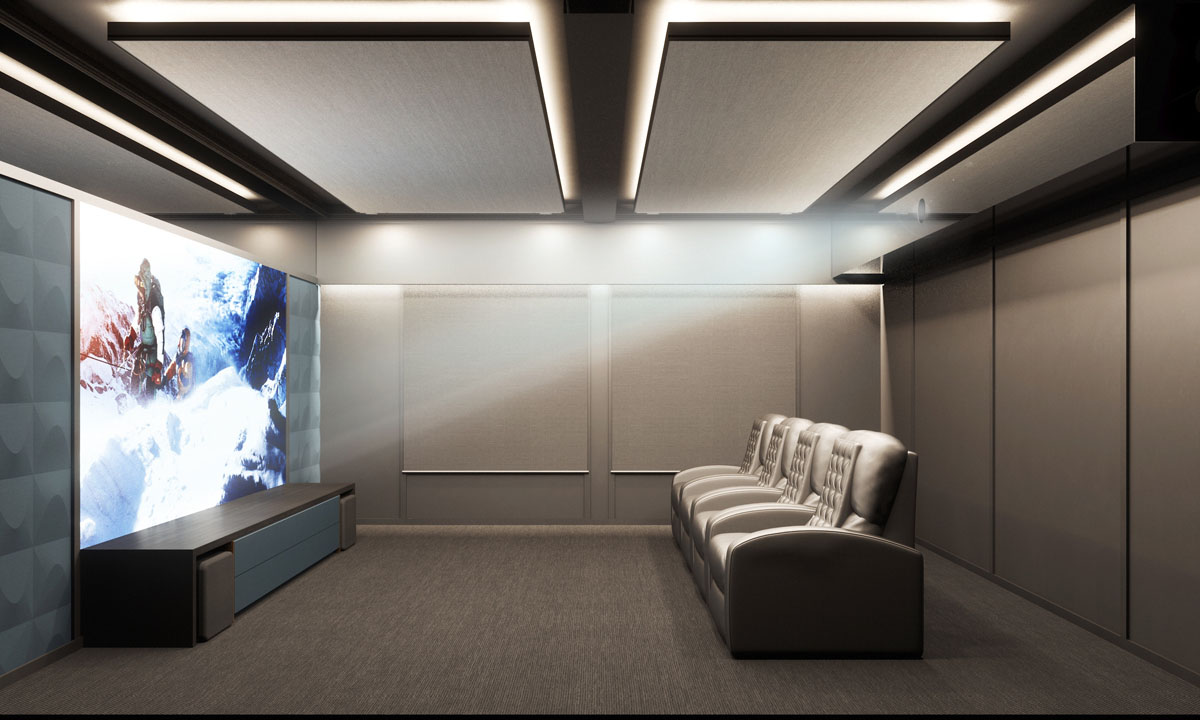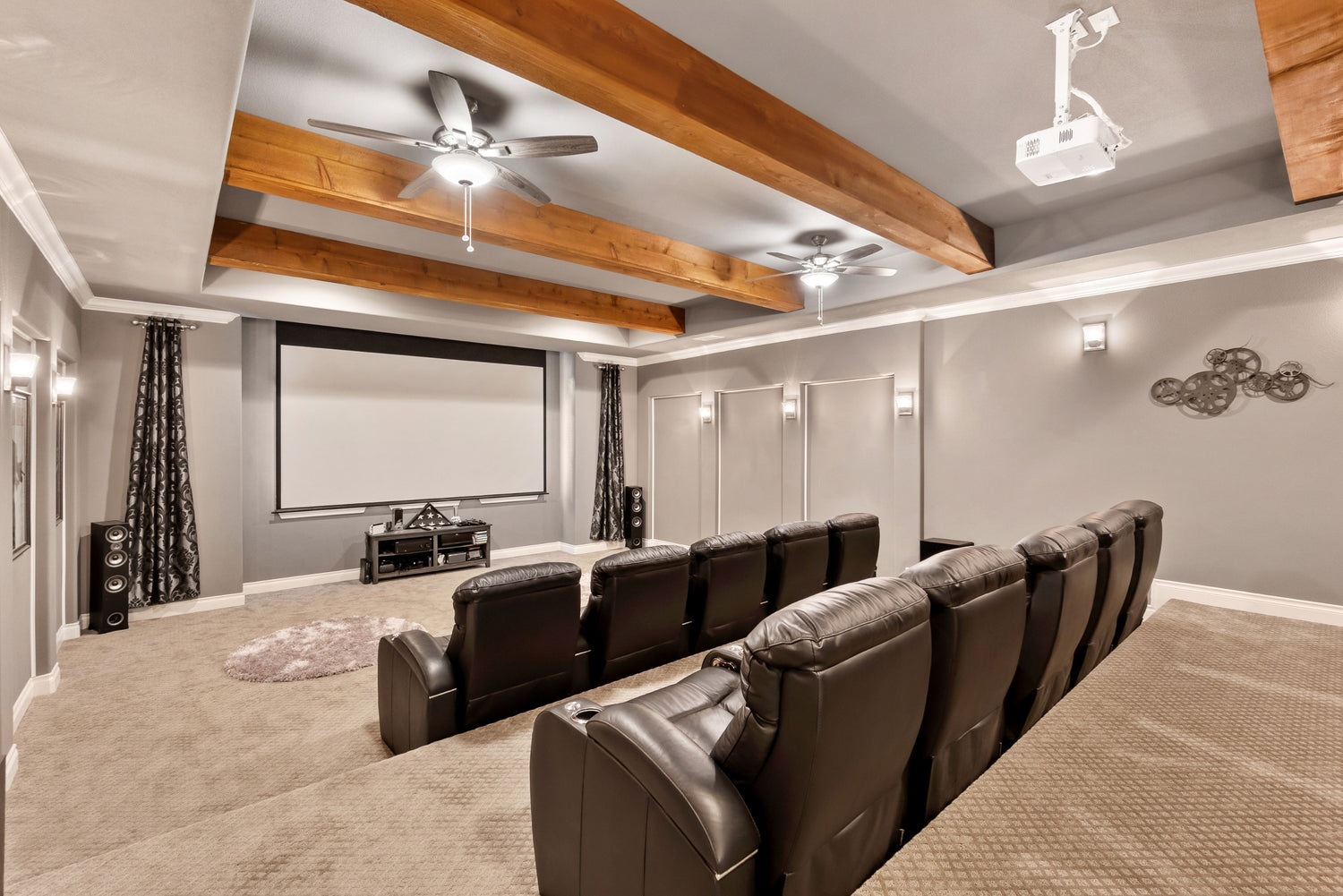Innovative Home Theater Tampa Concepts for the Stylish Home
Innovative Home Theater Tampa Concepts for the Stylish Home
Blog Article
Home Theater 101: Every Little Thing You Need to Know for a Motion Picture Experience at Home
Producing a home theater that equals the motion picture experience of a commercial theater entails cautious consideration of several components, including display choice, stereo, and area format. Each component plays a pivotal duty in achieving the desired ambiance and performance. Whether you are contemplating the perfect display size or the details of surround sound, understanding these basics is vital. As we discover these essential elements, it ends up being apparent that the options made can dramatically impact your overall watching experience, leaving one to consider how these choices will shape your individual movie theater.
Choosing the Right Screen
When setting up a home theater, picking the ideal screen can make or damage the viewing experience - home theater design tampa. The display acts as the focal point of your setup, affecting image quality, checking out angles, and general visual. Trick elements to take into consideration include screen size, kind, and resolution
Initially, figure out the suitable screen size based on your space dimensions and seating range. Next, select between numerous screen types, such as fixed-frame, motorized, or retractable displays, each offering distinct advantages.
Resolution is an additional vital variable. For a genuinely immersive experience, consider a display created for 4K or perhaps 8K content, ensuring intensity and clearness. In addition, consider the screen's gain, which impacts brightness and comparison; a higher gain can enhance illumination in well-lit spaces, while a reduced gain might be much more appropriate for darker atmospheres.
Choosing Sound Equipment
Audio equipment is a crucial component of any type of home movie theater system, considerably enhancing the total watching experience. The option of audio gear can identify the deepness, clarity, and immersion of audio, important for developing a cinematic ambience.
When selecting audio tools, consider a border stereo, which usually consists of a receiver, multiple audio speakers, and a subwoofer. A 5.1 or 7.1 network system is recommended, where the initial number stands for the audio speakers and the second the subwoofer, offering an immersive soundscape. The receiver is the heart of the system, handling sound and video clip signals, and should sustain contemporary formats like Dolby Atmos for an enhanced spatial experience.
Quality speakers are necessary; search for designs that offer a balanced sound profile with great bass action. Floor-standing audio speakers can produce richer noise, while shelf choices save room. Furthermore, take into consideration cordless options for ease of installation, although wired systems frequently deliver premium performance.

Optimal Seating Arrangements
Creating a suitable home theater experience pivots dramatically on optimal seating plans. The arrangement of seats plays an essential duty in both convenience and viewing high quality, straight impacting the total cinematic experience.
First, think about the screen size and viewing distance. A common guideline is to position seats at a distance roughly 1.5 to 2.5 times the angled dimension of the display. This makes certain an immersive experience without stressing the eyes.
Next, altitude is essential. The back rows must be greater than the front to stay clear of obstructions if your seats is in a tiered style. For level seats, see make sure that the front row is not as well near the display, which everyone has a clear line of sight.
Moreover, consider the plan in regards to social characteristics. Team seating can improve the communal experience, while individual seats may be chosen for personal watching.

Finally, focus on comfort with ergonomic seating that supports extended viewing periods. Incorporating reclining chairs or cushioned seats can considerably enhance the experience, making the home cinema a recommended location for both amusement and relaxation.
Lighting and Atmosphere
Reliable lighting and setting are essential elements of a well-designed home theater, as they dramatically influence the watching experience. The right illumination can enhance the motion picture feel, while bad choices can diminish it. For optimum results, take into consideration a layered lighting method that includes ambient, task, and accent lights.
Ambient lights offers basic lighting, guaranteeing that the area is not completely dark, which can stress the eyes. Dimmer switches are very recommended, enabling changes based on the web content being checked out. Task lighting, such as wall sconces or floor lights, offers functional lighting for tasks like reading or navigating the room without interrupting the overall ambience.
Accent lighting can be made use of to highlight architectural features or develop focal factors, adding depth and rate of interest to the room. LED strip lights behind screens or along shelves can give a refined radiance that enhances the visual experience without overwhelming the audience.

Wiring and Installation Tips
A tactical wiring setup is crucial for attaining ideal efficiency in your home theater system. Proper wiring not only guarantees high-grade audio and video signals yet also improves the overall aesthetic of your room. Begin by mapping out your format, recognizing where each part will certainly be placed, including your screen, speakers, and receiver.
When picking cords, focus on high-quality, suitably assessed wiring to decrease signal loss. HDMI cable televisions should be utilized for video links, while speaker cord ought to match the specs of your audio speakers and amplifier. Choose in-wall ranked wires to adhere to security standards and keep a clean look.

Conclusion
In summary, creating an outstanding home theater experience needs cautious factor to consider of various elements, consisting of screen selection, audio tools, seating plans, lights, and electrical wiring. By focusing on discover here these aspects, a cinematic ambience can be successfully duplicated, enabling for immersive checking out experiences that equal standard movie theater settings.
Creating a home theater that measures up to the motion picture experience of a commercial theatre entails cautious consideration of multiple components, consisting of screen option, audio systems, and area format.When establishing up a home theater, picking the best screen can make or break the seeing experience. Next, pick in between various screen types, such as fixed-frame, motorized, or retractable displays, each offering distinctive benefits. For a really immersive experience, take into consideration a screen designed for 4K or even 8K web content, making sure sharpness and quality.In summary, developing an exceptional home cinema experience calls for cautious factor to consider of different components, including display option, audio tools, seating arrangements, illumination, and wiring.
Report this page